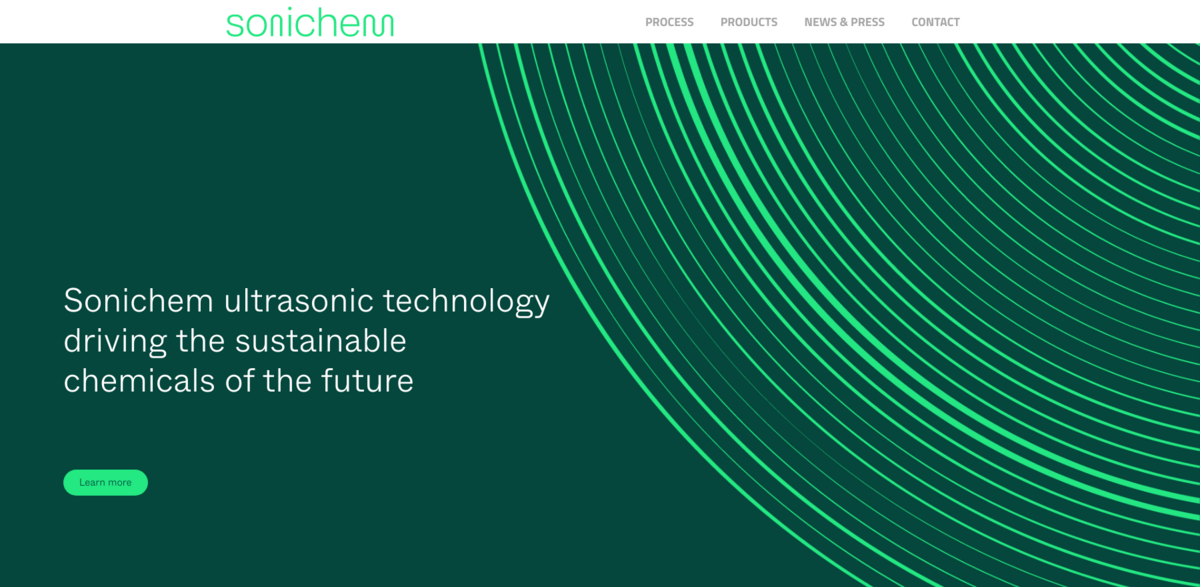What is the Sonichem Project?
Sonichem ultrasonic technology is all about driving the sustainable chemicals of the future by converting low-value woody biomass (like sawdust) into high value green chemicals. This ultra-clean biorefinery process takes non-food woody biomass – by-products from forestry and agriculture that would otherwise be burnt or left to decay – and upcycles it completely into pure platform chemicals. At its core, the patented Sonichem process uses ultrasound energy to break important chemical bonds in lignocellulosic feedstock, liberating cellulose, natural sugars, and lignin fractions. The result is high-quality products produced at low temperature and pressure, making it not only a faster and cleaner method, but also inherently safer.
Main Benefits of Sonichem Technology
The Sonichem technology offers several key advantages that make it stand apart:
- Low energy consumption – significantly less than conventional methods, leading to a low carbon footprint.
- Zero waste – every bit of biomass is upcycled with no impurities and only recyclable solvents.
- High conversion efficiency – more than 95% of the feedstock is transformed into valuable products.
- Safe processing – operates at lower temperatures and pressures without the need for highly corrosive mineral acids.
- Integrated process – seamlessly converts woody biomass into three clean product streams, including some of the purest lignin on the market.
Sustainable Process and Energy Efficiency
At the heart of the Sonichem process is the clever use of ultrasonic energy, which facilitates the fractionation of biomass at much lower temperatures and pressures compared to traditional technologies. This approach not only saves energy but also reduces CO2 emissions significantly, contributing to a low carbon footprint throughout production. The process has been designed to maximize carbon efficiency, with an impressive conversion rate that ensures almost the entire feedstock turns into a valuable product. Energy efficiency and reduced environmental impact clearly go hand in hand, creating a sustainable path for producing green chemicals.
Responsibly-Sourced Biomass and Zero Waste
The technology emphasizes sustainable sourcing by using non-food woody biomass that is responsibly sourced from forestry and agricultural by-products. This feedstock would otherwise be discarded, burnt, or left to deteriorate, making its conversion into high quality green chemicals a smart and eco-friendly alternative. The process ensures zero waste, utilizing every bit of the biomass to produce clean product streams. With no co-products or impurities, and by using recyclable solvents, the technology further reinforces a commitment to a zero waste philosophy.
High-Quality Green Chemicals and Product Quality
By relying on relatively mild processing conditions, the Sonichem process avoids decomposing valuable products, meaning that hemicellulose sugars are recovered without hydrolysis, lignin retains its purity, and cellulose is recovered in a highly crystalline form. It produces three distinct, clean product streams – the high-quality cellulose, natural sugars, and lignin. Notably, non-sulfonated lignin, known for its potential conversion into extremely high value products, is far more accessible through this process compared to traditional methods. When it comes to quality, the outcome is truly impressive and meets the stringent standards demanded by food, pharmaceutical, and other precision industries.
Innovative Pilot Plant and Technology Demonstration
The innovative ultrasonic technology has already been demonstrated successfully at the Sonichem pilot plant facility. This integrated pilot plant features a small scale ultrasonic reactor, mixing vessel, and comprehensive Process Control Systems that work together in perfect harmony to process small batch quantities. A dedicated Quality and R&D lab on site supports beneficial process chemistry insights and quality analysis. The facility serves multiple purposes: proving that the novel technology works reliably and repeatably, producing consistent kilogram product samples for potential end users, and generating key process chemistry data essential for scaling up to commercial production. This hands-on pilot plant validation is a testament to Sonichem’s commitment to revolutionising biorefining.
Project Impact on Sustainable Development Goals
- Climate Action – by reducing energy and carbon emissions.
- Affordable and Clean Energy – through energy efficient processes.
- Industry, Innovation and Infrastructure – promoting innovative green chemical production.
- Responsible Consumption and Production – ensuring zero waste and sustainable biomass use.
The Future of Ultrasonic Technology in Green Chemicals
This remarkable ultrasonic biorefinery process is faster, cleaner, safer and even cheaper than current state-of-the-art methods – a real game changer for the chemical industry. By using ultrasound to break down lignocellulosic feedstock, this technology opens up exciting opportunities not just in the production of high quality green chemicals, but also in the development of sustainable materials and packaging with a minimal environmental footprint. Flexible in adapting to various types of lignocellulosic feedstock, and scalable through its modular design, the process is poised to meet supply chain constraints and market demand dynamically. With carbon sequestration benefits and the promise of transforming low-value biomass into strategic high value products, the ultrasonic technology by Sonichem paints a bright, sustainable future.





















